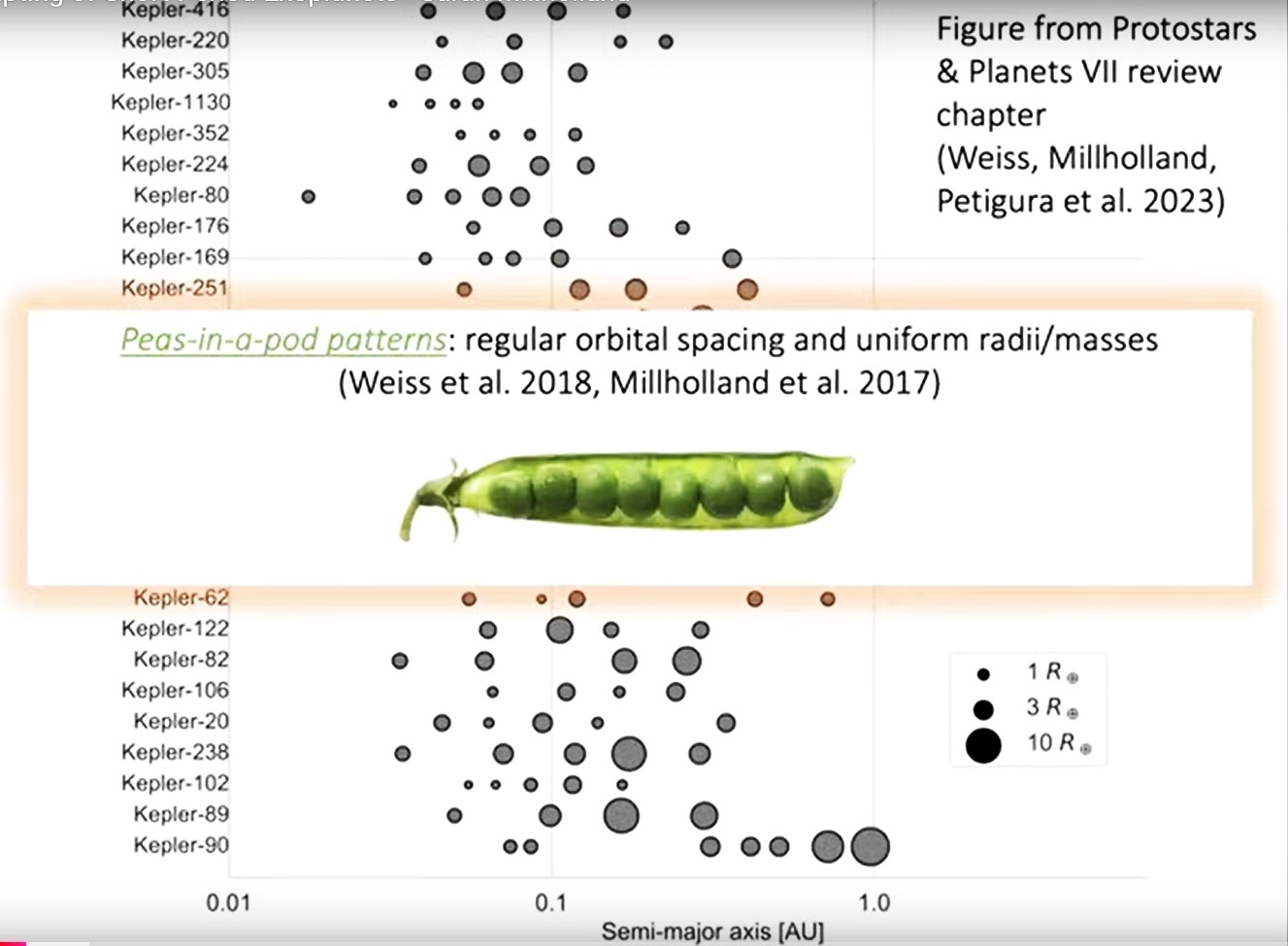John Carlos Baez on Nostr: Happy Thanksgiving! I'm thankful to be living in the age when humanity got to know ...
Happy Thanksgiving! I'm thankful to be living in the age when humanity got to know planets outside our Solar System. I remember being awed when we detected the first one in 1992. I never expected that we'd soon be seeing THOUSANDS of them and learning what planets are TYPICALLY like. That's actually much more interesting.
We can only detect planets that are large enough and/or close enough to their star, so what we're seeing is biased. But taking that into account, we still see some real trends - and they're amazing. There are plenty of Solar Systems that are not like ours.
Check out these solar systems with planets bigger than Earth, and closer to their star than we are to the sun! Plenty are as big as Neptune - 4 times the radius of the Earth. Some are as big as Saturn - 9 times the radius of Earth. There are even bigger ones, not shown here. (That's another story.)
But the really interesting thing is that the planets often act like peas in a pod! They're often regularly spaced and of uniform size - roughly.
This is something we need to understand. We can try to figure it out by simulating the formation of solar systems.
Why do we need to understand it? Because we live here, and we can't resist trying to understand our universe!
(1/3)

We can only detect planets that are large enough and/or close enough to their star, so what we're seeing is biased. But taking that into account, we still see some real trends - and they're amazing. There are plenty of Solar Systems that are not like ours.
Check out these solar systems with planets bigger than Earth, and closer to their star than we are to the sun! Plenty are as big as Neptune - 4 times the radius of the Earth. Some are as big as Saturn - 9 times the radius of Earth. There are even bigger ones, not shown here. (That's another story.)
But the really interesting thing is that the planets often act like peas in a pod! They're often regularly spaced and of uniform size - roughly.
This is something we need to understand. We can try to figure it out by simulating the formation of solar systems.
Why do we need to understand it? Because we live here, and we can't resist trying to understand our universe!
(1/3)
